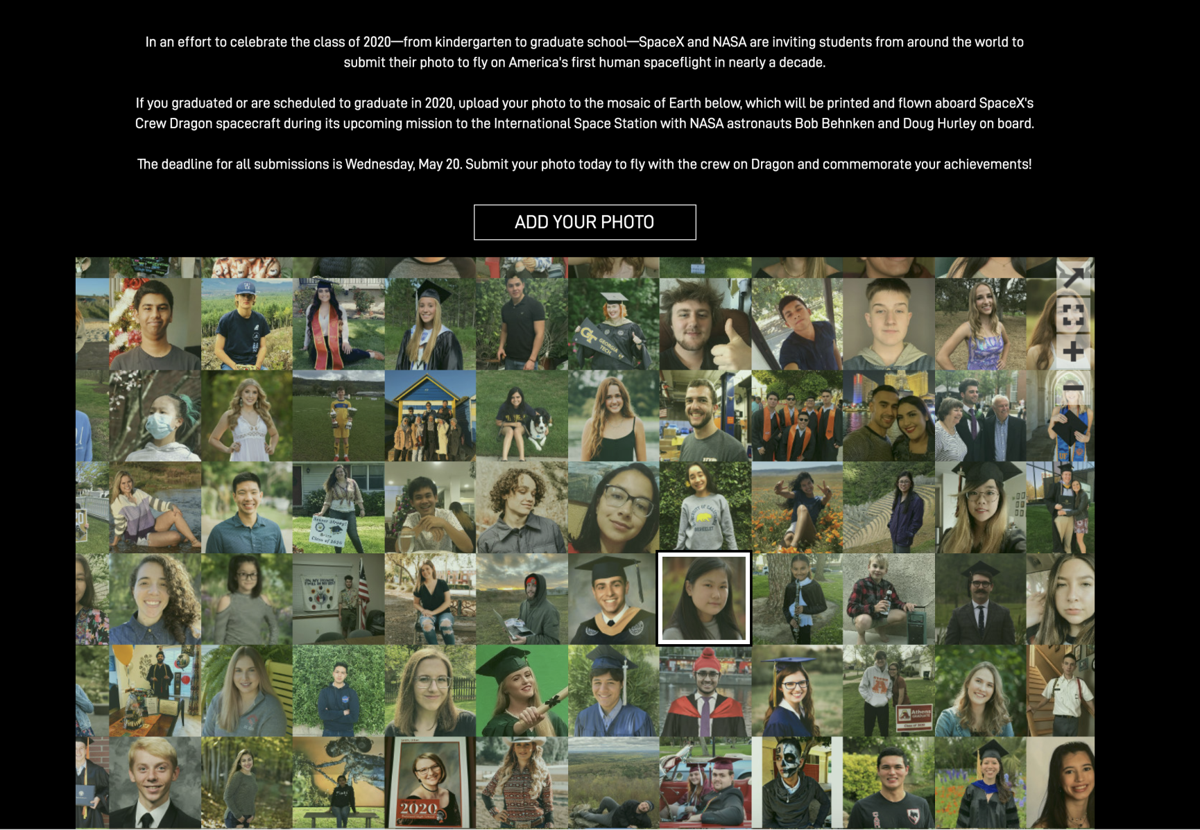
Due to COVID-19, the Class of 2020 is missing out on a traditional graduation. However, those who accepted SpaceX's invitation to upload selfies to the company's website will commemorate their milestone year with a journey most people only dream about.
They — or at least their photos — will "accompany" NASA astronauts Bob Behnken and Doug Hurley to the International Space Station (ISS) on SpaceX's first-ever crewed flight. Even better, it will be America's first human spaceflight since NASA's Space Shuttle program was retired in 2011.
The historic Demo-2 mission will launch from NASA's Kennedy Space Center in Florida at 1:33 p.m. PST (4:33 p.m EST) on May 27, 2020. Its primary purpose is to test the Crew Dragon spacecraft and the Falcon 9 rocket's suitability for human flight. If all goes as expected, SpaceX could begin regularly flying astronauts to and from the ISS as early as summer 2020. This would reduce NASA's dependency on Russia's Soyuz spacecraft, which has been the astronauts' only means of getting to and from the ISS for nearly a decade. SpaceX's relatively low price of $56 million per seat will also save the US agency, which currently spends $86 million per seat, a substantial amount of money.

"Next week will mark the beginning of a new era in human spaceflight with the launch of NASA astronauts Bob Behnken and Doug Hurley to the International Space Station," NASA officials wrote in a statement released on May 19, 2020. "This test flight will be a historic and momentous occasion that will see the return of human spaceflight to our country, and the incredible dedication by the men and women of NASA is what has made this mission possible."
While Behnken and Hurley will reach the ISS about 19 hours after they leave Earth, their return date is yet to be decided. It will be determined by two factors: the Crew Dragon's condition in orbit and the progress of SpaceX's Crew-1 capsule, the first operational flight of a Crew Dragon spacecraft, which will transport the four crew members of the Expedition 63/64 to the ISS, sometime this year.

NASA officials estimate the astronauts will spend anywhere from a month to a maximum of 119 days on the space station. They will, however, return to Earth by September 23, 2020, because the Crew Dragon capsule's solar arrays are not designed to withstand degradation in space for more than 120 days.
"Any solar array in low Earth orbit tends to degrade a little bit over time," Steve Stich, deputy manager of NASA's Commercial Crew Program, said on May 1, 2020. "It turns out the atmosphere has a little bit of oxygen in it — it's called atomic oxygen — and so there's a little bit of degradation in the ability for the cells itself to generate power. And the particular cells on the trunk for a Dragon, based on analysis capability, kind of a worst-case prediction, we think we can get about 120 days capability out of those."
Fortunately, the beaming images of the millions of 2020 graduates have no return deadline. That means they will be able to continue their space "mission" eternally!
Resources: Cnet.com, Space.com, www.entrepreneur.com